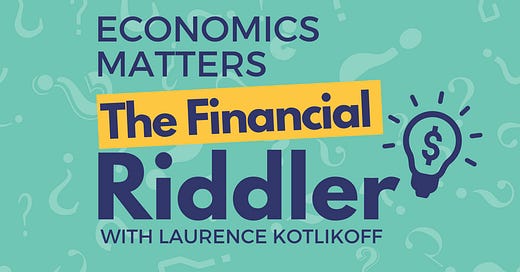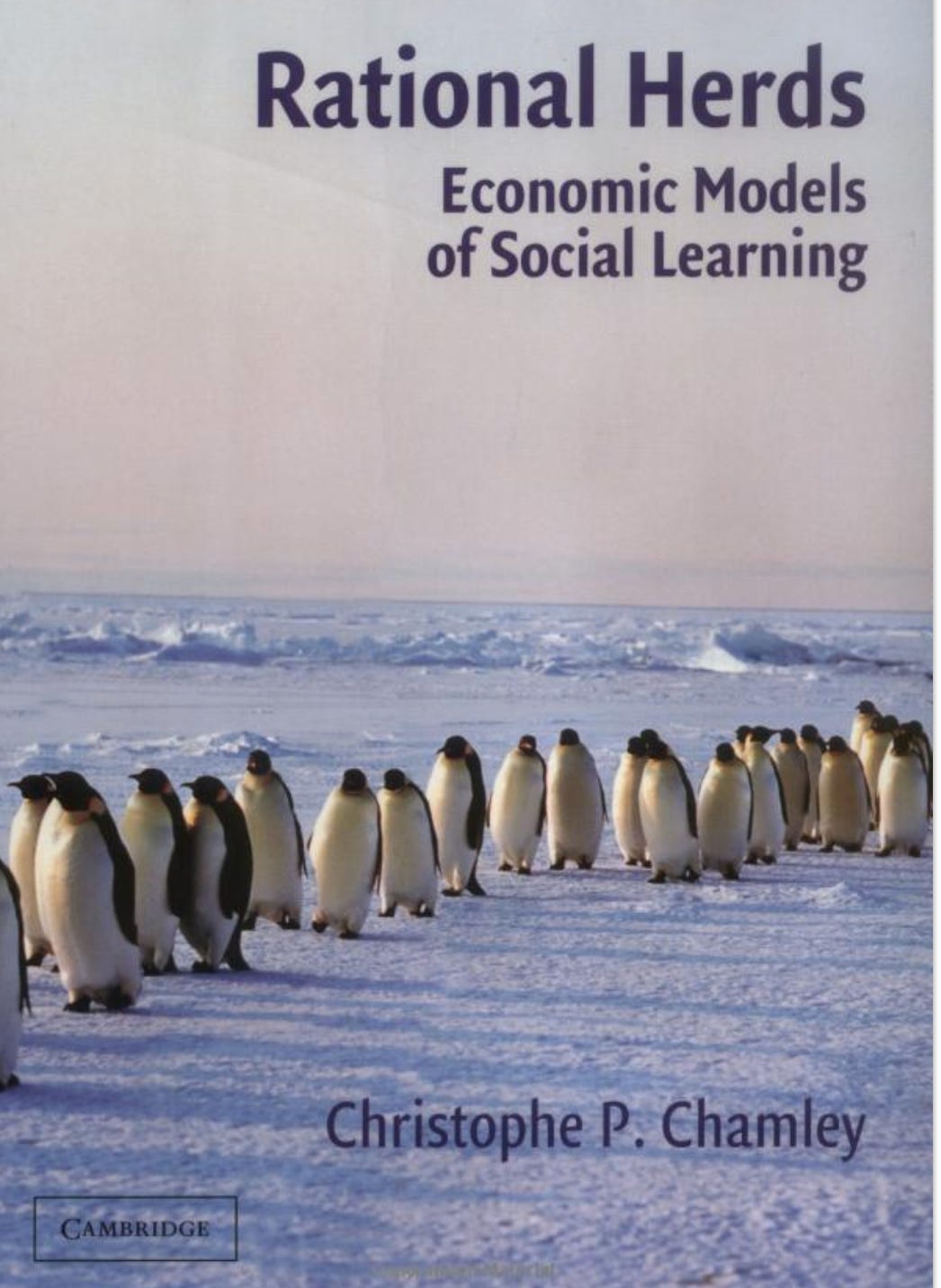Time for another Financial Riddler, where losing is winning. Miss an answer, get an answer. So, not to worry. Also, please share the Riddler with your 18th cousin, 13th removed. And check out our terrific podcasts. We’ve had 18 thus far. More are in the hopper.
Today’s Riddler is based on the cover of my dear friend and BU colleague, Christophe Chamley’s book, Rational Herds. (Lots of math, so … ) Check out the cover below. It’s penguins walking in single file.
Penguins are very cool creatures. They can hold their breath for 27 minutes. Some can swim at 27 mph. They wear tuxedos on all occasions. And some live in colonies with hundreds of thousands of members. On land, penguins have no natural predators. But when fishing, they can be eaten by leopard seals and killer whales.
Now to avoid peeking, scroll slowly and stop at “And the answer is.” Then check how you did. Also, all past riddlers are posted under Posts.
Why do penguins walk in a line in the snow?
a. It’s easier to see where to go.
b. Those in front block the wind for those behind.
c. The oldest leads. She/he knows the route best. The rest follow.
d. Walking in trampled snow is easier for the group as a whole.
And the Answer Is …
The answer is surely d. This shows penguin herds are rational. They conserve energy.
Why do penguins line up single file perpendicular to the edge of a cliff before they jump in, one after another, to go fishing?
a) They walked in a line to get to the cliff, so ended up in a line.
b) If they stay in line, they can jump in and swim with their friends.
c) They feel better having other penguins jump first.
d) It’s a form of military discipline
And the Answer Is …
The answer is c. They like others to jump first. If others jump first, the seals and whales will likely be stuffed by the time they jump.
If jumping last leads to a higher chance of survival, why don’t they all line up in a row along the cliff’s edge and each jump last?
a) They’d lose track of their friends in moving from a line to a row
b) Everyone would wait for the others to jump
c) They don’t like heights
d) They don’t want to see who’s waiting to eat them before they jump
And the Answer Is …
The answer is b. Everyone would wait for someone else to jump first and they’d never go fishing and starve to death. Or the hungriest might jump and the others would wait to see if she were eaten. And the next hungriest would eventually jump. This would maximize the number of eaten herd members. The predators would sit back and wait for each new victim to, in effect, walk into their jaws. But if all the penguins jump pretty much at once, more escape before they, themselves, became lunchmeat.
If penguins want others to jump first, why don’t they all try to get to the back of the line?
a) It’s too long a walk to the end of the queue.
b) They want to, but the emperor penguin sets the order.
c) Some penguins are hungrier than others and want to jump early
d) The penguins at the front of the line get first dibs on the fish
And the Answer Is …
The answer is c and d. There is an advantage to waiting to jump — a smaller chance of getting eaten. But there’s an offsetting advantage of jumping early — less competition finding fish to eat. And, yes, if you’re particularly hungry, being at the front or close to the front of the line makes sense. Ignoring differences in hunger, the penguins should be indifferent between their position in line. The closer to the front, the higher your chance of being eaten, but the more fish you’ll find to eat. The closer to the back, the lower your chance of being eaten, but the less fish will be left to eat.
Do penguins push each other off the cliff?
a) No! Penguins are far too dignified. Look at their clothes!
b) Yes, if the lead Penguin is too scared to jump, those behind eventually give the heave-ho.
And the Answer Is …
The answer is b. The lead Penguin is looking for predators. If the coast is clear, s'/he’ll jump right away. Otherwise, s/he’ll wait for the predators to leave. But if they don’t, the following logic comes into play. “Gee, we’re getting really hungry. Better to push Joe, the lead bird, in the drink and we all quickly jump in. Our nemeses will probably gobble up Joe, but if we’re all in there together, each of our chances of surviving will be higher.
As penguins in front of you jump, do you stop to look for predators before jumping yourself?
a) No. You just jump without looking.
b) Yes, you stop and look. More predators may have shown up.
And the Answer Is …
The answer is a. Once diving off the cliff and into the water is on, herd behavior applies. At this point, it’s rational to ignore your own information about the predators below because, with everyone else jumping in, the chance you’ll be digested is smaller. Indeed, penguins just take the plunge without looking. Whether or not there are lots of predators, it’s still best to fish with everyone else. And there’s an enforcement mechanism to make sure penguins don’t stop at the edge and look. The one behind will push them in. Thus, unlike lining up along the edge of the cliff, lining up perpendicular to the cliff solves the coordination problem of getting everyone to get into the water pretty much at the same time and to do what’s socially rational (best for the herd), ignore your private information. This explains the title — Rational Herds — of Christophe’s book. But even though penguins are acting rationally on average, they may all jump in when there are an unusually large number of predators. So, rational behavior can seem rather irrational.
The economics of penguins has lots of analogies. Consider someone screaming FIRE!! in a crowded room. People will rush out the door trampling others. Each may know the fire’s not that big, but they have to run to avoid being crushed. Everyone’s private information is disregarded in the process. Indeed, once the rush is on, no one has an incentive to even bother checking if there is a fire.






Jerry, ::: )))
Wil do!
XO, Larry
Not sure either. But they sure know how to work together.
best, Don, Larry